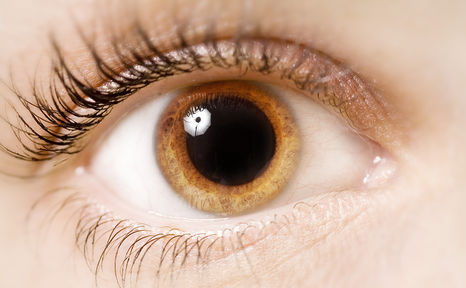


The same inflammatory process that affects the joints and bones can also affect the eyes. Inflammatory eye problems include dry eyes, Sjogren’s syndrome, keratitis sicca, sclertitis, uveitis, retinal vascular occlusion, cataracts and glaucoma. As patients with arthritis, it is our responsibility to keep track of eye-related symptoms and to get regular eye exams.
Dry eyes: Dry eyes are a common problem for people with arthritis and are due to a lack of tear production. Patients may notice irritation, a gritty-like feeling, burning, sensitivity to light, and feeling that there is something in the eye. Patients who have dry eyes frequently are at risk for infections around eye and possible damage to the cornea.
Sjogren’s syndrome: Eye dryness is a common symptom of Sjogren’s syndrome. This is an inflammatory disease that affects many parts of the body but most specifically the saliva and tear glands. As much as 25 percent of patients with autoimmune forms of arthritis develop sjogren’s secondary to their disease, this according to the National Institute of Arthritis and Musculoskeletal and Skin Diseases.
Keratitis sicca: Sometimes called dry eye syndrome, keratitis sicca causes inflammation of the conjunctiva (inside part of the eyelid that covers the white of the eye) and cornea causing decreased tear production. If you have this condition, you will notice dryness in the eyes, the feeling of having something in your eye, and/or your vision may be blurred.
Sclertitis: Sclertitis is a condition where the sclera, or the white part of the eye, is inflamed. Symptoms of sclertitis include redness that does not go way with artificial tears, severe pain, sensitivity to light and some vision loss. Sclertitis is generally an indicator that inflammation is not controlled, not just in the eyes, but also in the body.
Uveitis: Uveitis is a condition where the uvea, the vascular layer of the eye between the retina and the white of the eye, is inflamed. Uveitis causes pain, redness, sensitivity to light and blurred vision. It can also lead to vision loss.
Retinal vascular occlusion: Retina vascular occlusion is very serious condition wherein the small blood vessels that feed the retina become blocked. The blockage is similar to what happens during a stroke. Vision loss is a result of a blocked eye artery or a backed up vein. A blocked artery involves vision loss that comes on suddenly while a backed-up vein causes gradual vision loss.
Cataracts: Cataracts occurs when the lens of the eye becomes clouded, causing blurry or dim vision and may also include inflammation of the eye. Long-term use of corticosteroid therapies, used to treat arthritis, are often to blame for this condition.
Glaucoma: Glaucoma is a condition where fluid pressure on the eyes rises and causes damage to the optic nerve. Symptoms include eye pain and blurriness with eventual vision loss. Overuse of non-steroidal, anti-inflammatory drugs (NSAIDs) and corticosteroid medications are often blamed for causing glaucoma.
Many of the medications used to treat arthritis have strong side effects. As a result, it is important to be aware of the different ways to prevent and look out for eye symptoms related to arthritis.
Schedule yearly eye exams. You need an eye exam at least once a year. If your eye doctor finds that you have an inflammatory eye condition, he or she will want you to come in more than once a year for an exam. Tell the ophthalmologist about all the medications your taking and the reasons you have been prescribed those medications.
Disclose to your arthritis doctor any eye symptoms you are having. One of the most common eye symptoms associated with arthritis is dry eyes. While artificial tears can relieve dry eyes and redness, it is important not to self-medicate especially when dryness is a frequent symptom. Talk to your doctor about using prescription eye drops that are specific to what it is causing your eye symptoms.
Avoid contact lens use. People with arthritis should not use contacts because contacts are known for drying out eyes. The use of contacts in people with arthritis have long been associated with inflammatory eye conditions. http://www.nei.nih.gov/health/dryeye/factsaboutdryeye.pdf
Use sunglasses when outdoors. If you experience dry eyes, sunglasses can protect your eyes from further dryness, irritation and inflammation.
Arthritis associated eye conditions can be either serious and long-term or temporary. Sometimes inflammatory eye conditions may need treatment and other times, inflammation can subside on its own. Treatment may include corticosteroid eye drops or oral medications. It is also recommended to wear dark glasses to protect inflamed eyes especially when you are outdoors. In most cases, managing your arthritis disease can likely stop the eye inflammation.
Copyright © www.orthopaedics.win Bone Health All Rights Reserved